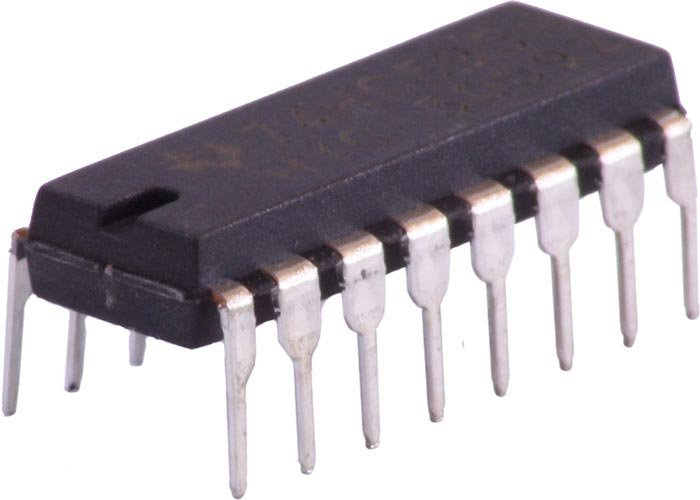It seems that the integrated circuit was destined to be invented. Two separate inventors, unaware of each other’s activities, invented almost identical integrated circuits or ICs at nearly the same time.

Jack Kilby, an engineer with a background in ceramic-based silk screen circuit boards and transistor-based hearing aids, started working for Texas Instruments in 1958. A year earlier, research engineer Robert Noyce had co-founded the Fairchild Semiconductor Corporation. From 1958 to 1959, both electrical engineers were working on an answer to the same dilemma: how to make more of less.
In designing a complex electronic machine like a computer it was always necessary to increase the number of components involved in order to make technical advances. The monolithic (formed from a single crystal) integrated circuit placed the previously separated transistors, resistors, capacitors and all the connecting wiring onto a single crystal (or ‘chip’) made of semiconductor material. Kilby used germanium and Noyce used silicon for the semiconductor material.
In 1959 both parties applied for patents. Jack Kilby and Texas Instruments received U.S. patent for miniaturized electronic circuits. Robert Noyce and the Fairchild Semiconductor Corporation received U.S. patent for a silicon based integrated circuit. The two companies wisely decided to cross license their technologies after several years of legal battles, creating a global market.
In 1961 the first commercially available integrated circuits came from the Fairchild Semiconductor Corporation. All computers then started to be made using chips instead of the individual transistors and their accompanying parts. Texas Instruments first used the chips in Air Force computers and the Minuteman Missile in 1962. They later used the chips to produce the first electronic portable calculators. The original IC had only one transistor, three resistors and one capacitor and was the size of an adult’s pinkie finger. Today, an IC smaller than a coin can hold 125 million transistors.
Jack Kilby holds patents on over sixty inventions and is also well known as the inventor of the portable calculator in 1967 Robert Noyce, with sixteen patents to his name, founded Intel, the company responsible for the invention of the microprocessor, in 1968. But for both men the invention of the integrated circuit stands historically as one of the most important innovations of mankind. Almost all modern products use chip technology.

